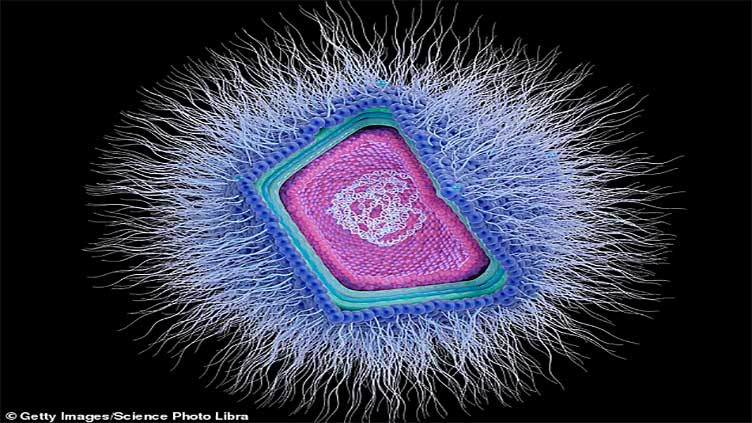Scientists discover hundreds of mysterious giant viruses lurking in ocean

Technology
Most viruses are less than 0.5 per cent the width of a human hair
(Web Desk) - It's an idea that sounds straight from the latest science fiction blockbuster.
But scientists at the University of Miami have warned that the world's oceans are teeming with 'giant viruses', also known as giruses.
Most viruses are less than 0.5 per cent the width of a human hair – too small to be seen with the naked human eye.
In contrast, the researchers say that the giant viruses are five times bigger, rivaling bacteria in terms of size.
Concerningly, all 230 giant viruses are previously unknown to science.
What's more, their impact on humans remains unclear.
Generally, giant viruses attack tiny organisms such as algae and amoebas in the world's waterways, although they could live on land too.
'The impact of giant viruses is no doubt present across all environments, but special interest has been taken to uncover their impact on aquatic ecosystems,' the experts say.
Most viruses are in the range of 20 to 200 nanometres, but giant viruses can be more than 1,000 nanometres.
For comparison, the width of a human hair is approximately 80,000 to 100,000 nanometres.
Giant viruses were practically unknown to science until the early 21st century, but scientists think they can have a major impact on life on Earth.
In the oceans, they infect various species of single-celled algae – the photosynthetic organisms that are responsible for about half of the Earth's oxygen production.
This viral infection can cause a rapid collapse of algal blooms – accumulations of algae stretching across tens of thousands of kilometers in the ocean – which in turn can substantially affect extensive marine, atmospheric and terrestrial ecosystems.
Although algae blooms can overgrow and become a problem, infection by giant viruses can have the opposite problem – causing their rapid collapse, which can deplete oxygen in the atmosphere.
Where and what types of these giant viruses exist around the world is still understudied, the researchers point out.
To learn more, they used a computer software tool called BEREN to identify the genomes of microbes in seawater samples.


